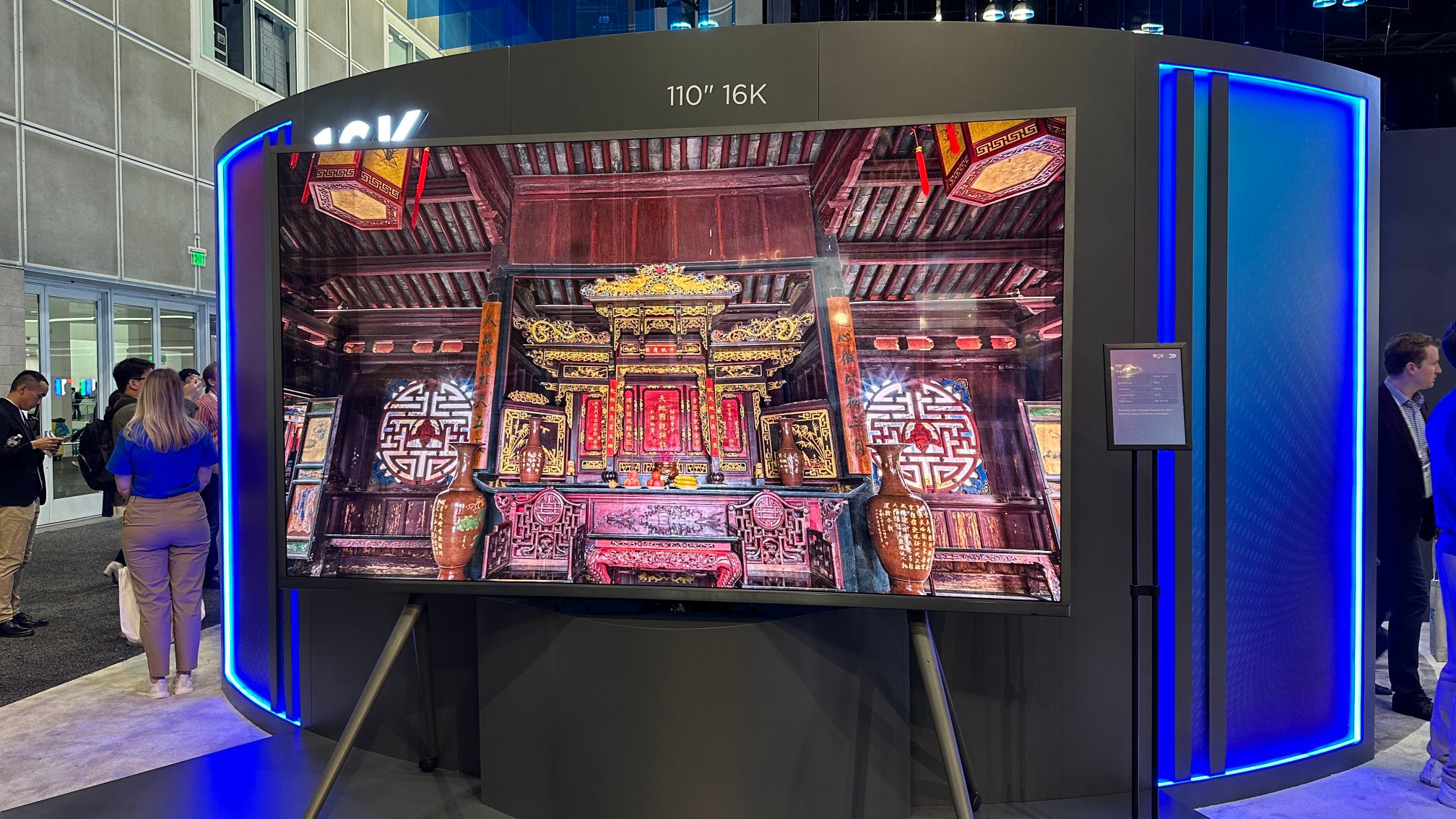
There’s a lot of activity in the TV world this week thanks to the ongoing Society for Information Displays (SID) 2023 event going on in Los Angeles, and the latest display to make an appearance there is a 110-inch 16K LCD screen with some truly awful specs.
Spotted in the wild by fellow TV journalist Vincent Teoh, the massive BOE display rocks a 60Hz native refresh rate with a max luminance of 400 nits and a contrast ratio of 1200:1.
Forget 8K. Here’s the world’s first 110-inch 16K display unveiled by BOE at #Displayweek2023. LCD-based, max 400 nits. The resolution is unreal though, no visible pixels even right up close. pic.twitter.com/kS7Tx0r4ZNMay 23, 2023
To put those specs in perspective, the Samsung QN95B Neo QLED TV — one of the best TVs of last year — has a peak brightness of around 2,900 nits and a 20,000:1 contrast ratio. The BOE display has 16 times as many pixels as last year’s premium Samsung QLED TV, but those pixels are objectively worse looking.
In BOE’s defense, this screen is likely supposed to be used as an informational display rather than a replacement for your living room smart TV, so don’t trash the brand too hard for its efforts.
We’re clearly not ready for 16K just yet
We’ve barely crossed into 4K territory with TV shows and movies, but that hasn’t stopped TV manufacturers from pushing the envelope with higher resolutions.
TV makers like Samsung, LG and Sony routinely put out 8K TVs like clockwork this time of year, while some of the more budget TV makers like TCL have begun to dabble with higher-resolution screens (see: TCL 6-Series R648).
It probably goes without saying, but the world just isn’t ready for 16K yet. Very few cinematic cameras shoot in 16K so all non-native footage would need to be upscaled to that resolution, and no network that we know of — over-the-air or streaming — is capable of delivering videos in that resolution.
In short, the pipeline for 16K just doesn’t really exist right now.
As far as the in-between 8K resolution is concerned, we’re still skeptical about its advantages for the majority of TV watchers. There’s broad consensus among reviewers that 8K TVs look better on large screen sizes, but the jury is out if you’d be able to notice a difference between a 65-inch 4K TV and a 65-inch 8K TV.
What we can say for sure is that resolution is just one piece of a larger picture when it comes to display technology — without a high contrast ratio, wide color gamut and high peak brightness, you’re really only getting a quarter of the experience that a good 4K TV like the Samsung QN95B can provide.







